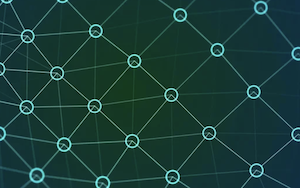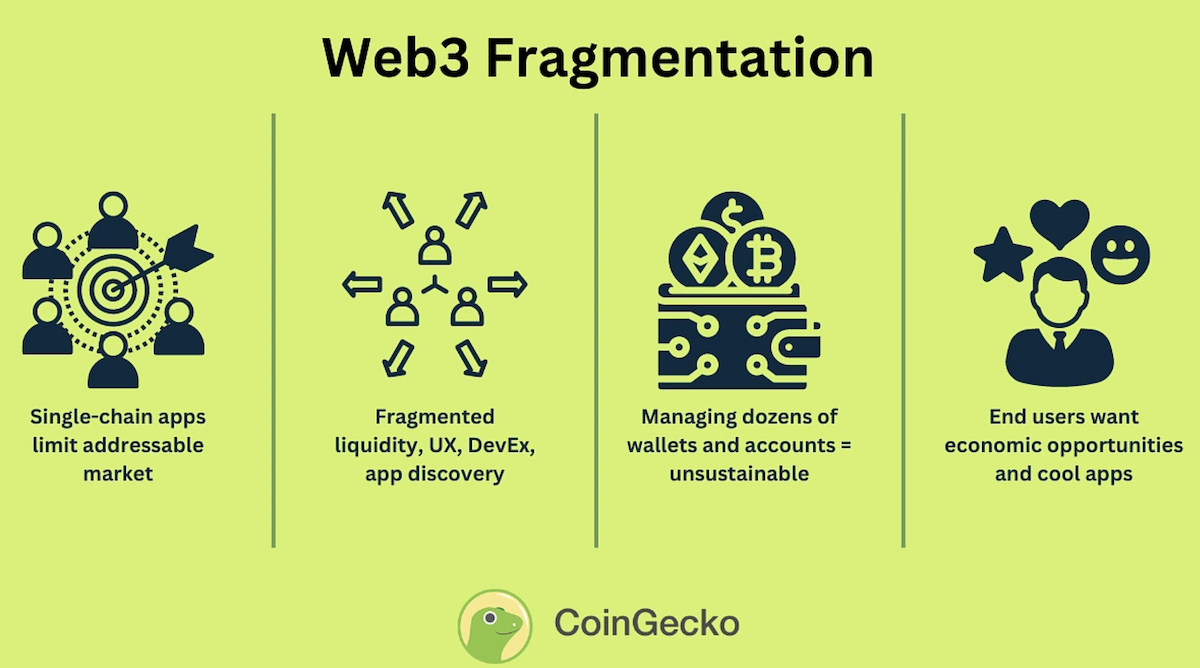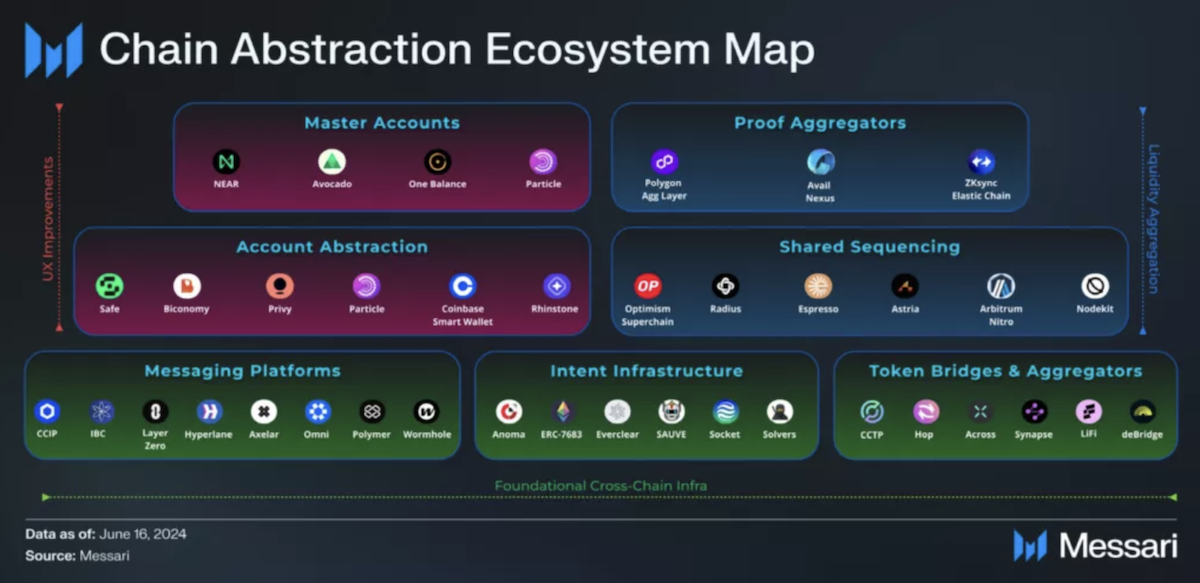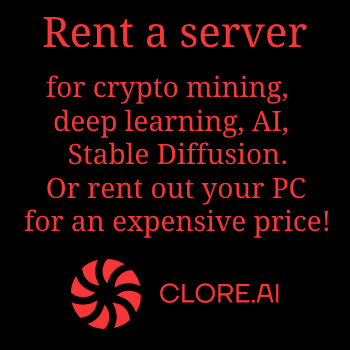 In the world of cryptocurrencies and Web3, fragmentation remains one of the biggest challenges hindering mass adoption. With hundreds of blockchains, millions of tokens, and disjointed ecosystems, both users and developers face significant barriers. Network Abstraction is a concept designed to address these issues by providing a unified interface for interacting with multiple blockchains. In this article, we’ll explore what network abstraction is, how it works, which projects are implementing it, and what prospects await this technology in 2025.
In the world of cryptocurrencies and Web3, fragmentation remains one of the biggest challenges hindering mass adoption. With hundreds of blockchains, millions of tokens, and disjointed ecosystems, both users and developers face significant barriers. Network Abstraction is a concept designed to address these issues by providing a unified interface for interacting with multiple blockchains. In this article, we’ll explore what network abstraction is, how it works, which projects are implementing it, and what prospects await this technology in 2025.
The Problem of Web3 Fragmentation: Why It Matters
By the end of 2024, the number of unique active wallets (UAW) in decentralized applications (dApps) reached 24.6 million per day, a 485% increase compared to the previous year. These wallets operate across more than 350 blockchains, each with its own features, tokens, and architecture. However, due to technological differences, blockchain ecosystems remain isolated from one another, creating barriers for users and developers.
Challenges for Users:
- A complex user experience (UX) that requires technical knowledge to interact with dApps.
- The need to manage multiple wallets for different blockchains.
- Time-consuming cross-chain transfers that often incur additional fees.
- The necessity to maintain token balances across all used networks.
Challenges for Developers:
- Difficulties in integrating dApps across multiple platforms simultaneously.
- The need to choose a specific network for development, often accepting its limitations.
- A limited audience, as users tend to prefer specific blockchains.
Fragmentation drives many users to centralized exchanges (CEXs), which offer a user-friendly interface for token swaps and withdrawals to L2 networks. However, this contradicts the core principle of decentralization that underpins cryptocurrencies, as it shifts control over funds to third-party exchange operators.

What Is Network Abstraction?
Network Abstraction is a concept aimed at eliminating Web3 fragmentation by creating a unified interface for interacting with different blockchains. It hides technical complexities from users, allowing them to focus on using dApps rather than understanding how blockchains work.
In Simple Terms:
Network abstraction enables users to connect to a multi-chain application through a single interface, sign a transaction, and have it executed automatically without needing to understand the underlying blockchain. This is particularly important for sectors like DeFi, GameFi, and DeSoc, where users seek a seamless experience comparable to Web2 applications.
Example:
A user wants to swap tokens between Ethereum and Solana. Instead of manually transferring funds via cross-chain bridges, they simply select the desired action in a dApp, and network abstraction handles the rest in the background.
Network abstraction builds on earlier technologies like Account Abstraction (AA), introduced in Ethereum in 2023. AA transforms a wallet into a smart contract, simplifying UX: users can recover accounts without seed phrases, pay gas fees with stablecoins, and batch transactions. Network abstraction extends this approach to entire ecosystems, breaking down barriers between blockchains.
How Does Network Abstraction Work?
Network abstraction is not a single technology but a combination of solutions, including cross-chain bridges, messaging protocols, intent-based infrastructure, validator aggregators, and AA. Here’s how it works in practice:
- Abstraction Layer: This can be a standalone blockchain (e.g., Particle Network or NEAR) or a multi-layered solution that interacts with other networks. Smart contracts on this layer act as intermediaries, translating user requests into a format compatible with the target blockchain.
- Messaging Protocols: To facilitate communication between the abstraction layer and blockchains, solutions like LayerZero, IBC (Inter-Blockchain Communication), or Wormhole are used to transfer data across networks.
- Middleware: This includes: Relayers (e.g., Across, Socket) — transfer transactions between networks. Validators (e.g., Polygon AggLayer, Avail) — verify transactions to ensure security. Oracles — provide external data to smart contracts. Intent-based infrastructure (e.g., Enso, Valantis) — allows users to specify a goal (e.g., "swap tokens"), and the system finds the optimal path.
Workflow:
- A user initiates a request (e.g., a token transfer) through a dApp.
- The smart contract on the abstraction layer processes the request and converts it for the target blockchain.
- The converted message is sent via relayers to the target blockchain.
- The target network executes the transaction, and relayers confirm its success.
- The dApp’s interface updates, showing the user the result.

Projects Implementing Network Abstraction
Several startups and blockchains are actively working on implementing network abstraction. Let’s explore some key players:
- Particle Network: An EVM-compatible network built on Cosmos SDK, Particle Network simplifies UX through universal accounts. Users can manage assets across different blockchains with a single address, pay gas with any token, and automatically aggregate liquidity.
- Socket: Utilizes Modular Order Flow Auctions (MOFA) to ensure flexibility and modularity. Its Magic Spend++ feature allows interaction with dApps across networks with a single signature.
- XION: Offers a Generalized Abstraction Layer to remove technical barriers. Meta Accounts enable dApp logins via email or biometrics (FaceID), and transactions require no gas fees. In March 2025, XION became a verified blockchain in the EU under MiCA standards.
- NEAR: Employs multi-party computation (MPC) and three technologies: NEAR Intents (expressing user goals), Chain Signatures (signing transactions on other blockchains), and OmniBridge (secure cross-chain transfers).
- Agoric: Provides the Orchestration API, simplifying the development of cross-chain transactions for developers.
These projects demonstrate that network abstraction is moving from theory to practical implementation, making Web3 more accessible.
Prospects and Challenges of Network Abstraction
Benefits:
- Simplified UX, attracting a broader audience.
- Unified liquidity and user base, fostering innovation in dApps.
- Accelerated mass adoption of Web3 by removing technical barriers.
Challenges:
- Security: A unified interface could become a single point of failure, and poor implementation may pose risks to connected blockchains.
- Centralization: The risk of creating a single point of failure contradicts decentralization principles.
- Compatibility: Integrating blockchains with unique consensus algorithms and programming languages (e.g., Ethereum and Solana) remains complex.
Despite these challenges, Messari analysts predict that network abstraction will be a key trend in 2025. It has the potential to revolutionize Web3 interactions, making them as intuitive as Web2 applications.
Conclusion
Network abstraction is a step toward a future where users can interact with any blockchain through a single interface, without worrying about technical details. Projects like Particle Network, NEAR, and XION are already showing how this can work, eliminating fragmentation and simplifying UX. While challenges like security and compatibility remain, the potential is immense: from unifying liquidity to onboarding millions of new users to Web3.









